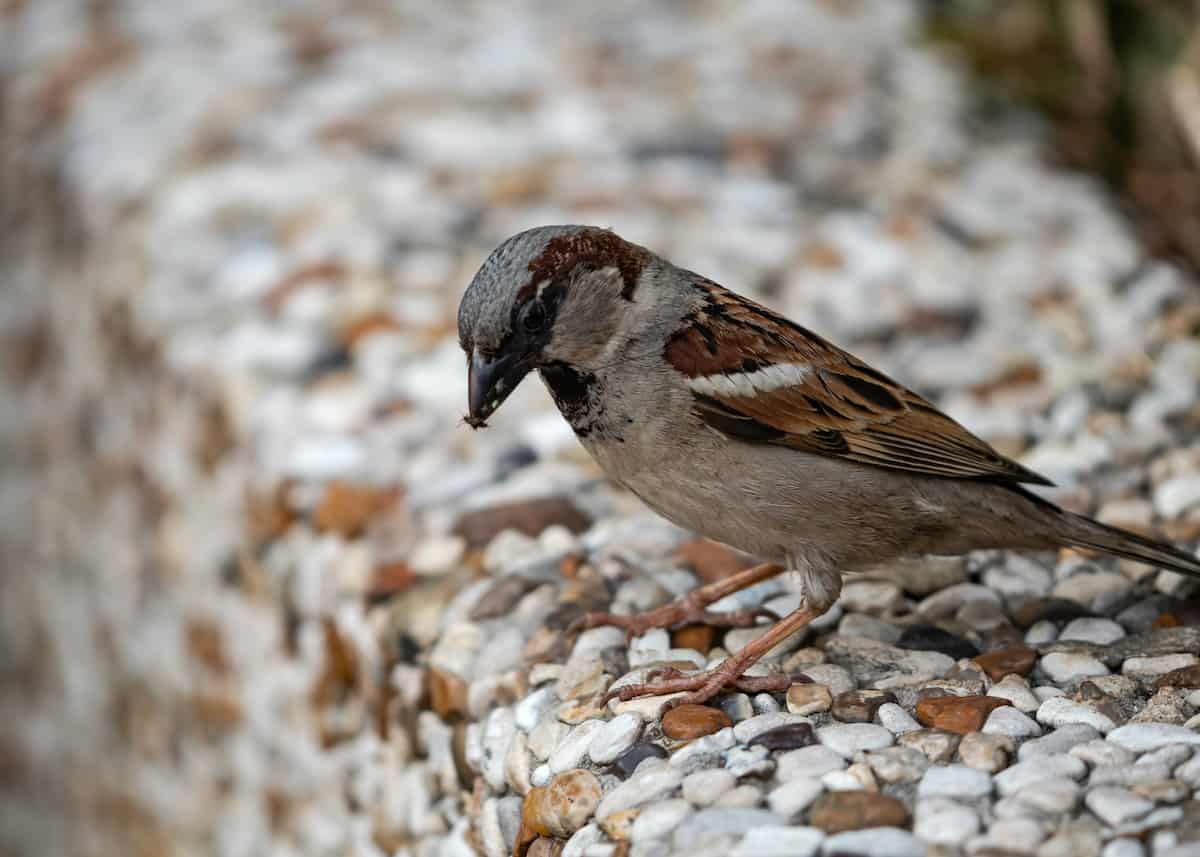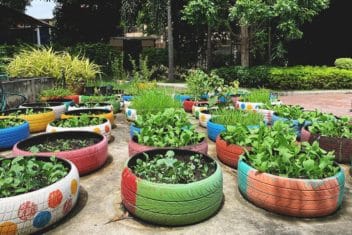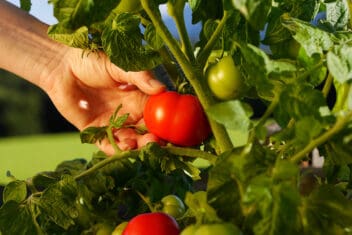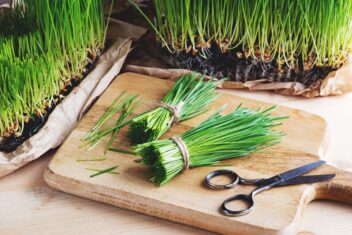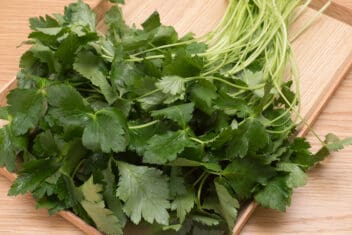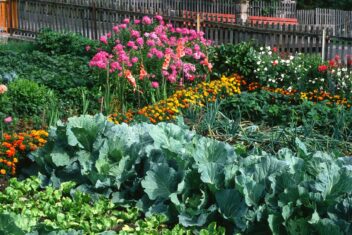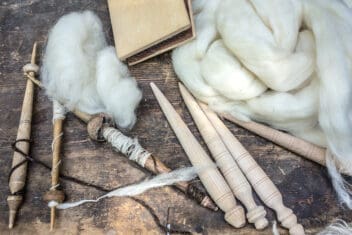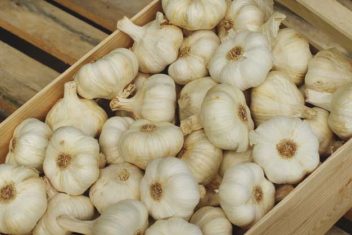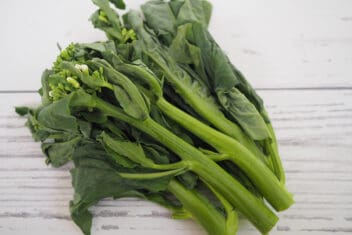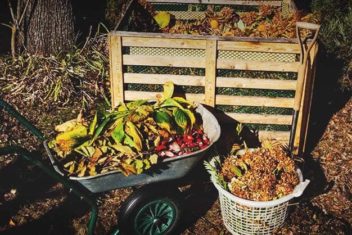There are many reasons to attract birds into your yards and garden spaces. They’re beautiful, entertaining, and sing delightful songs. Best of all, many birds eat lots of bugs… including some of the worst garden pests!
Insect loving birds eat a variety of garden pests including cabbage worms, grasshoppers, whiteflies, aphids, moths, stinkbugs, earwigs, cucumber beetles, and grubs, which are some of the most challenging garden foes out there.
This guide introduces you to the birds that eat pests and how to get some of them to visit your garden.
13 Good Bug-Hunting Birds
The following are bird species that eat a lot of bugs and are common in the U.S. You likely already have a few of them in your yard, so it’s just a matter of encouraging more.
Even if you don’t have any of these birds around normally, look around and see what you do have in your neighborhood and provide them with shelter and nesting opportunities near your garden.
You never know which birds might end up being valuable contributors!
1. Bluebirds
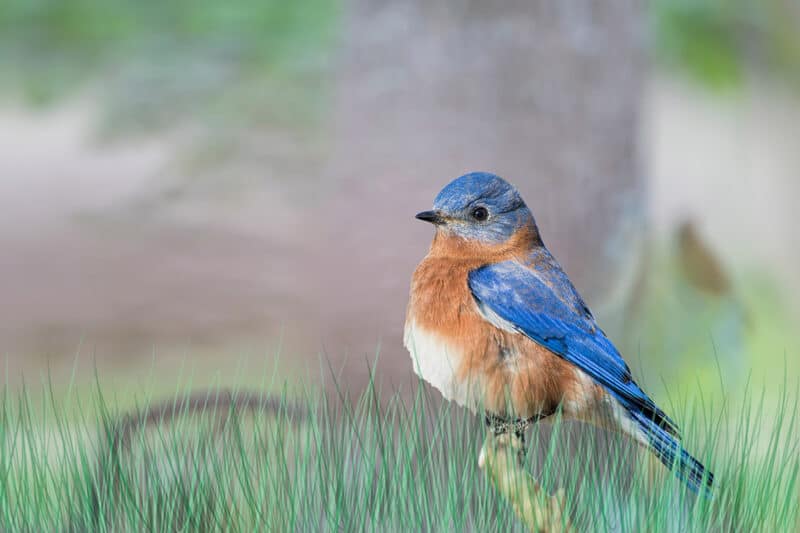
Bluebirds are the crème de la crème of insect hunters. Depending on where you live in the country you may have the Eastern, Western, or mountain bluebirds. Bluebirds are kissing cousins with another colorful friend – the robin.
Also depending on your location, you may have them year-round or they may stay in your area during the warmer months.
All are beautiful birds with voracious appetites. These birds are well worth attracting to your garden and having them set up house.
They feed on a variety of garden harming insects including grasshoppers, crickets, beetles, larvae, and moths.
Bluebirds also enjoy elderberry and sumac berries. To entice them to your garden, put mealworms in a nearby bird feeder. Just beware that the dastardly European starling might invade their home and you’ll need to work to get rid of it.
Bluebirds like open fields with large mature trees. They have specific housing needs. Building a bluebird house is a great project for a family or a teenager.
2. Cardinals
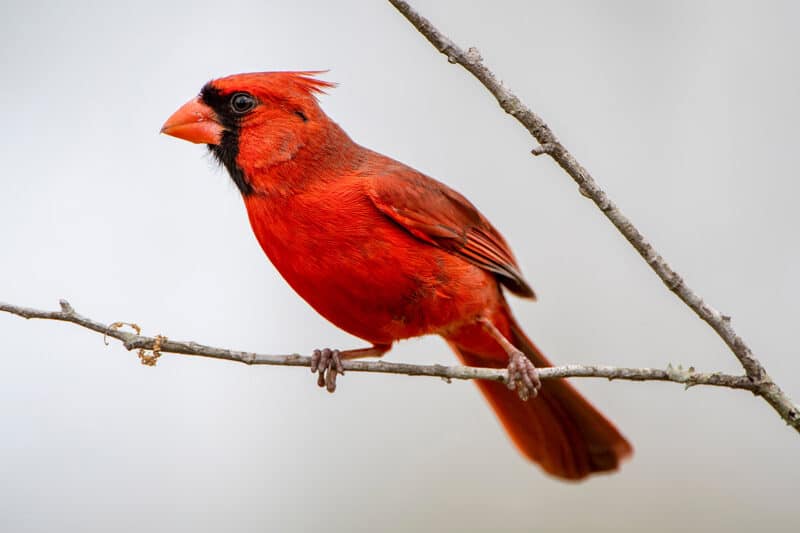
Cardinals are gorgeous red birds that stay around all winter, adding a beautiful touch to a drab landscape. Adult cardinals eat mostly seeds and fruits. In winter, a feeder full of sunflower, safflower, and cracked corn is a welcome treat.
However, in the spring, they feed lots of insects to their young. These babies enjoy larger insects such as beetles, grasshoppers, leafhoppers, stinkbugs, snails.
Cardinals love fruit trees and bushes for shelter. I had several pairs in my orchard this past year. Hopefully, they’re eating my plum curio larvae as well as the chicken’s leftover grains.
They also appreciate the thick coverage of evergreens in winter and to protect them from predators. Cardinals nest in shrub thickets and don’t use birdhouses. You can help them out by planting their favorite trees or providing nesting materials.
3. Purple Martins
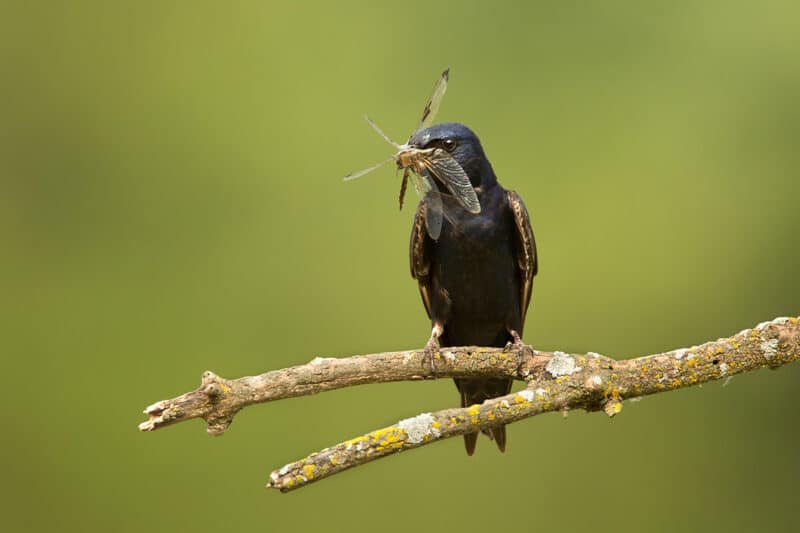
Purple martins are the ideal garden hunter. They’re related to barn swallows and, like them, swoop down on unsuspecting insects. They typically eat large flying pests such as flies, grasshoppers, moths, beetles, and dragonflies. Plus, they will even eat wasps.
Purple martins like to nest up high, yet out in the open. They also live in colonies. You may have heard of the martin apartment complex.
According to Cornell University, purple martins are in decline in much of the country. So encouraging them to your garden is a win-win.
A specialized home is needed to attract purple martins. Purchase one or download instructions to make your own.
Houses need to be mounted out in the open and at least fifteen feet high. You can place them on a pole that raises and lowers to make maintenance easier. Face it south or southwest.
4. Nuthatches
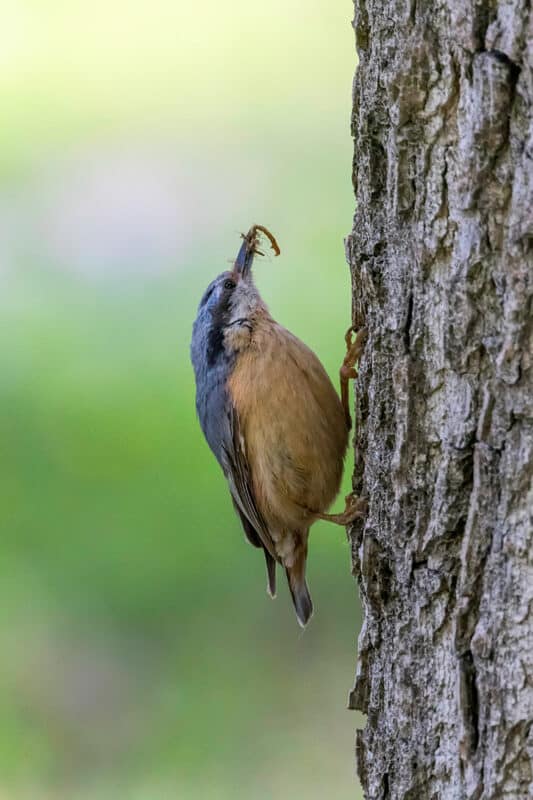
Found throughout the country, you may have heard their familiar yank-yank call which sounds like the honk of a car. Both the red-breasted and the white-breasted nuthatch eat insects in the spring and feed them to their young.
They’re good to have in orchards since they eat many types of tree and shrub insects such as borers. On top of that, they also enjoy caterpillars, ants, and earwigs.
They are feisty little birds and may chase off other cavity dwellers and steal their nesting spot.
Fun Fact: The red-breasted nuthatch uses the resin from trees as a glue while building a cavity nest.
5. Oriole
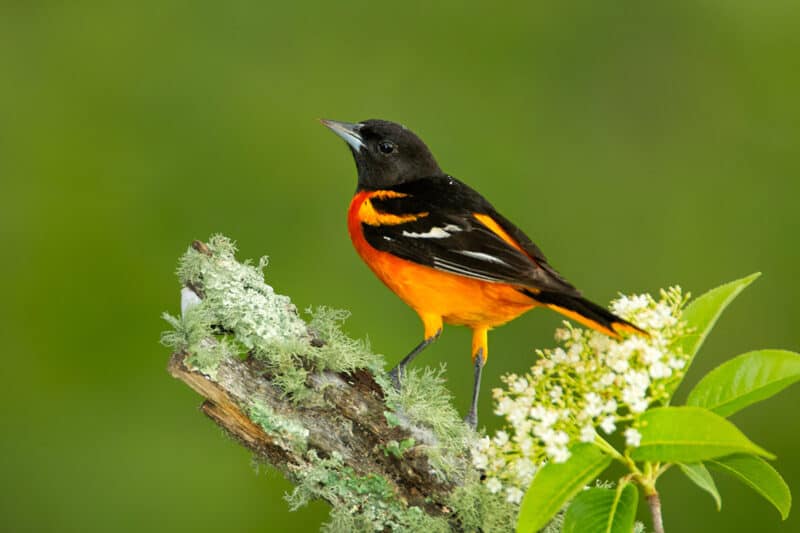
Orioles live in the Eastern and Central parts of the U.S. We often think of orioles as fruit eaters and associate them with the birdfeeders we make from oranges.
It’s true that in the fall and winter, orioles’ favorite food is fruit. However, in spring, they eat a lot of insects.
Their favorite bugs are caterpillars, moths, flies, insect larvae, beetles, and grasshoppers.
Orioles like tall open trees such as poplars, willows, and cottonwoods. Being fruit eaters they are also attracted to mulberries, elderberries, brambles, cherries, mountain ash, and hazelnuts.
Orioles’ nests are well known. These sock-like nests are woven out of fibers the birds collect. You can purchase hanging nests to entice orioles to your yard.
6. Titmice

There are several species in the titmouse family and collectively they live throughout North America. These small birds eat small insects and seeds.
They have sharp eyesight and love to eat aphids, leafhoppers, caterpillars, and beetles.
They overwinter in many parts of the country and can be encouraged to hang around by having a birdfeeder. This bird prefers sunflower seeds as well as suet, peanuts, and other seeds like millet.
The eagerly move into nest boxes placed on a pole near mature trees.
Fun Fact: The bridled titmouse which lives in the southwest often has extended family members help raise the young.
7. Wrens
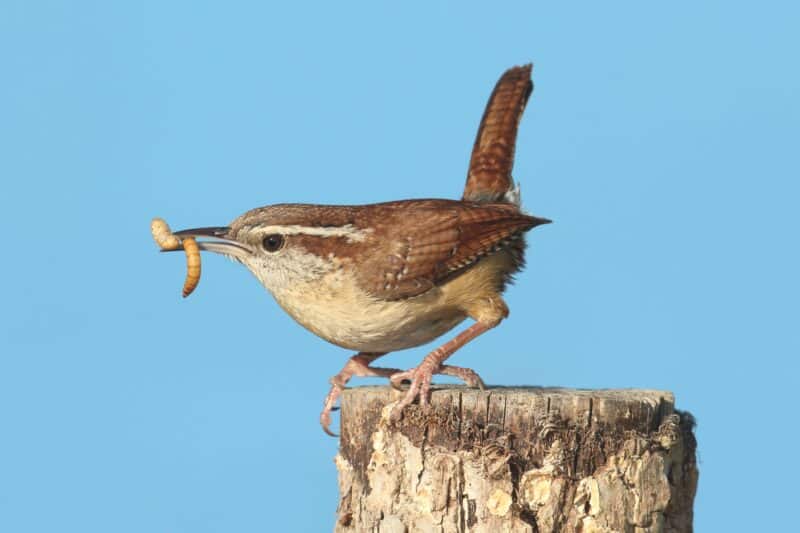
Wrens are small brown birds that you might easily miss if you’re not watching for them. Their drab color is a good camouflage and protects them especially during the winter.
Wrens are fabulous bug hunters and also eat many seeds of weed plants. Found all over the U.S. they have a distinct sound that Cornell University calls effervescent.
They happily munch on beetles, caterpillars, grubs, snails and ants. In winter you can keep them happy with peanut butter on pine cones and suet cakes.
Wrens are not picky about the type of birdhouse but do need an opening of 1 1/4 to 1 1/2-inches. They are often quite urbanized and may eagerly nest in small opening found in your garage or on the back porch.
Attach a guard to help keep out predators. Wrens also appreciate a brush pile nearby to hide in.
Fun Fact: Male wrens often start several nests to lure a female. She then chooses the “right one”.
8. Chickadees
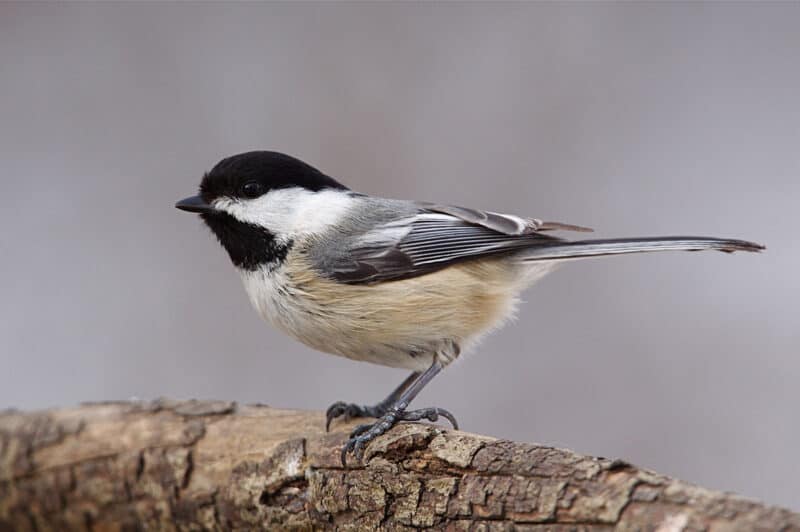
Chickadees have a seemingly endless appetite for grubs, worms, and caterpillars. Each adult has up to 8 chicks, which means you can have a lot of birds around to eat the worst of your garden pests.
Different chickadees have different housing preferences, but you can often attract them with a birdbox or leave old stumps in place in your yard, since they love to nest in the cavities.
9. Woodpeckers
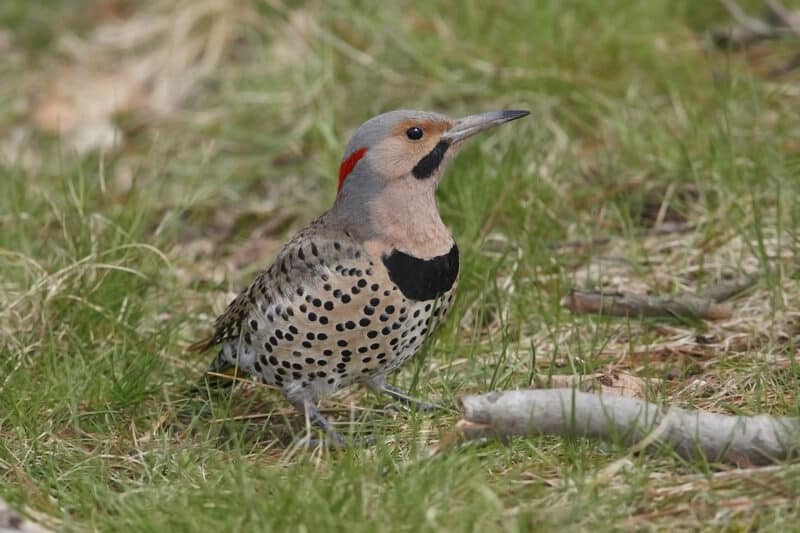
Woodpeckers can be a blessing and a curse. They can peck holes in wood where you don’t want them to, but they can also eliminate beetles, aphids, and other wigglers.
They stick around in the same area all year long, so they can even help in the winter.
There are oven a dozen varieties that you can put to work in the garden, but they all prefer a little shelter, easy access to water, and a cavity nesting spot or birdhouse where they can feel safe.
10. Tanagers
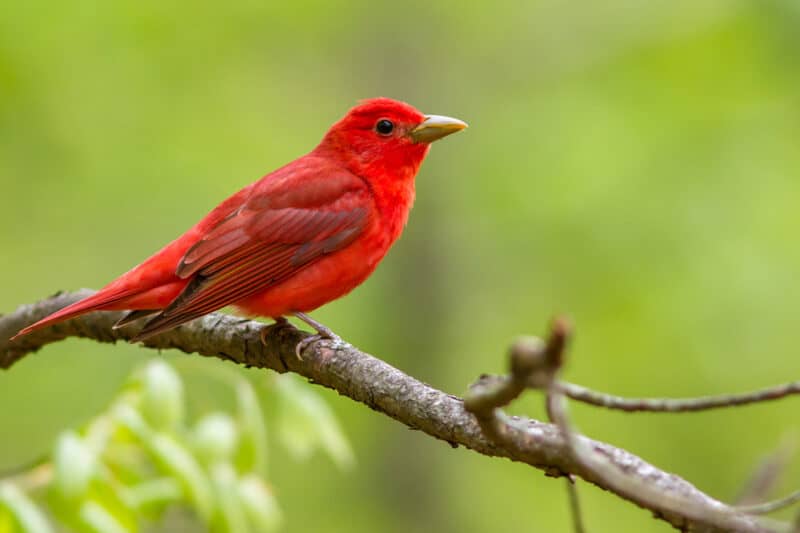
Tanagers devour a ton of different insects, but they are rare in that they can pull the stinger out of wasps and hornets before eating them.
While some wasps are nice to have around, particularly the parasitic ones, other wasps are a massive problem. Having tanagers around can mean a lot fewer stings as you’re working in the garden.
11. Sparrows
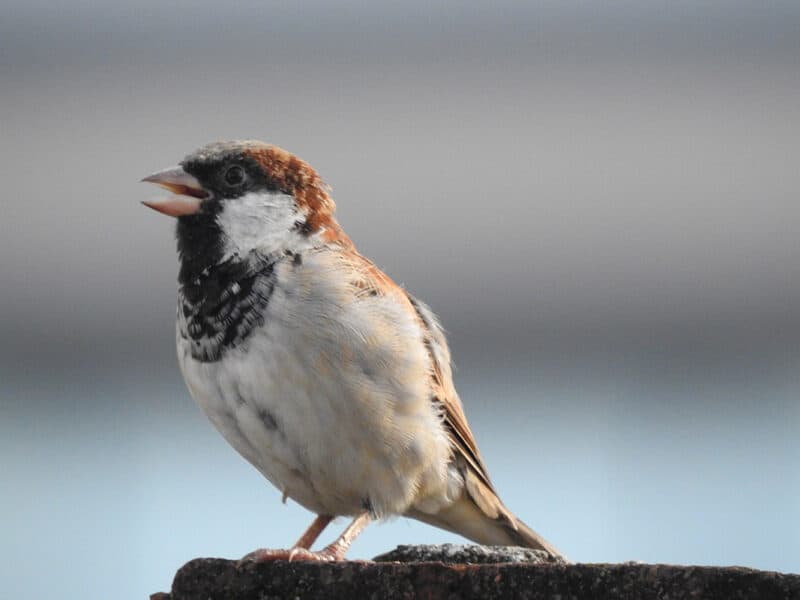
House sparrows like to live near humans and they hunt in the early morning and evening, though they won’t pass up the opportunity to nab a french fry off your plate any old time.
Sparrows like to feed their chicks insects, so they time their laying to align with the time when the bugs are out in full force.
That means they’ll be out there making a meal of pests when you need them most.
12. House and Purple Finches
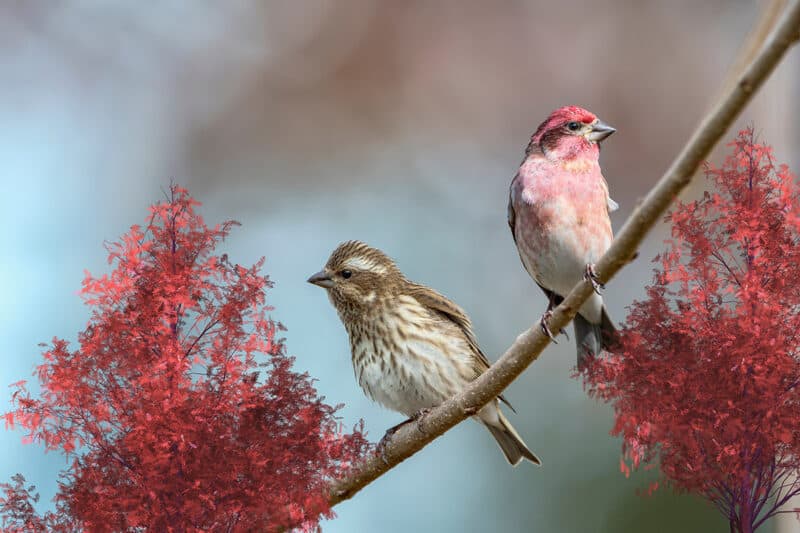
House finches eat aphids, beetles, and caterpillars. Purple finches are true pest eating powerhouses. They eat potato beetles, cucumber beetles, flea beetles, leafhoppers, and leafminers.
This bird really does eat all the worst of the garden pests.
13. Hummingbirds
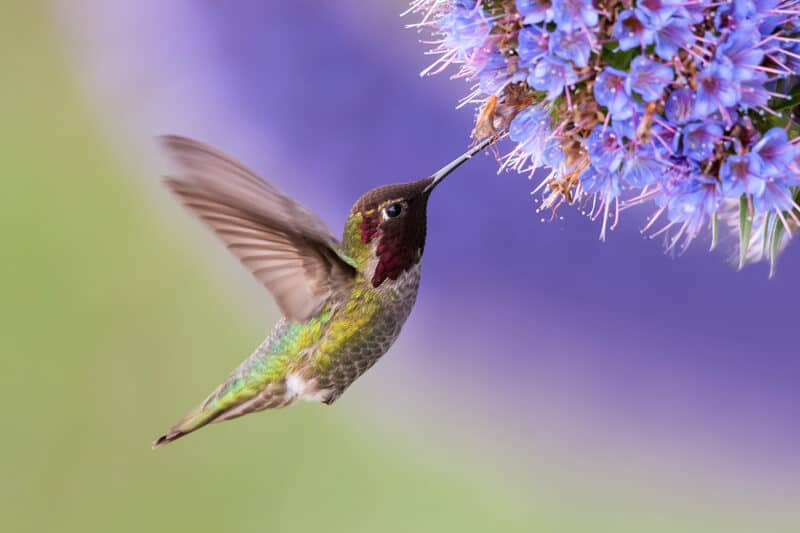
Hummingbirds don’t only go for nectar in flowers. They also eat tiny insects like aphids, mites, and mosquitos. These beautiful little flying jewels also help pollinate the plants in your garden, so you get a two-for-one.
How to Attract Bug-Loving Birds
Inviting birds to the garden is a win-win situation. They’ll help reduce your pest population in a natural chemical-free way.
Just like the rest of us, birds need food, water, and shelter. By providing these things you can build a bird-friendly habitat.
Some of these requirements are the same for many species. A water feature will serve many birds. However, housing is often species-specific, and birds can be quite picky about their homes and interior design.
A great book to read for more info is National Wildlife’s Foundation: Attracting Birds, Butterflies, and Other Backyard Wildlife by David Mizejewski.
The Right Food
Sure, you want your visiting birds to eat all those pests in your garden, but lots of birds eat multiple different things. It can help to put out feeders with seeds and nuts that attract birds who also eat insects.
Sometimes a bird’s diet depends on what season it is. They may eat more bugs in spring as the insects emerge from the ground, berries in summer, and seeds in fall as flowers turn to seed. Often nesting birds catch and feed insects to their babies.
Provide Water
Water is necessary for birds for both drinking and bathing. Placing a birdbath in your garden is a good idea. That way the birds don’t have far to fly when needing a drink. As we know birds love to congregate and have a party.
Don’t expect the birds to be able to drink from stock tanks or a farm pond. A low wide basin that holds one to two inches of water is best. Many birds prefer running water such as shallow creeks. You can make a bird waterer friendly by adding a bubbler to it.
In the winter it helps to heat the birdbath and provide them with fresh water when everything else is frozen.
Give Them Shelter
Birds need shelter and a place to build a nest. Some birds prefer tall trees while others like shrubs.
Shelter is a place they seek out so that they can have protection. They may need to get out of the hot sun or hide from a predator.
Shelter is often already existing in your landscape. Trees and bushes are the most popular. A wooden fence post, the top of a shed, or an electric line may also be popular places to perch.
Keep Your Cats Indoors
With all of this talk about attracting birds so that they can help be eating pests, it would be remiss not to mention cats. If you want to have a thriving bird population, then you need to keep your cats indoors.
It’s not the cat’s fault they want to eat that pretty little finch. Cats are natural predators. However, the typical house cat doesn’t need to hunt for its next meal.
In addition, songbird populations have declined in many areas. This is due in part because cat populations have increased.
Most house or farm cats don’t have natural predators because we protect them and provide them with safe spaces. This means the ratio to cats to birds has become unbalanced.
If you feel bad keeping your cat inside then build a catio. These outdoor enclosures allow cats to enjoy the sun and the outdoor smells while staying safe and keeping the birds safe.
